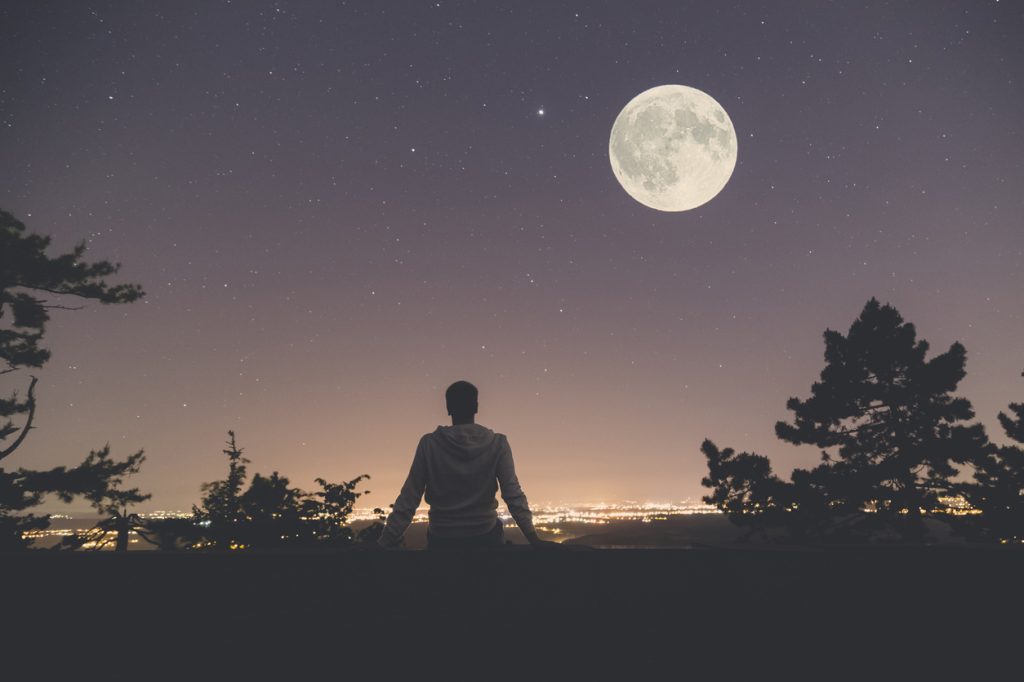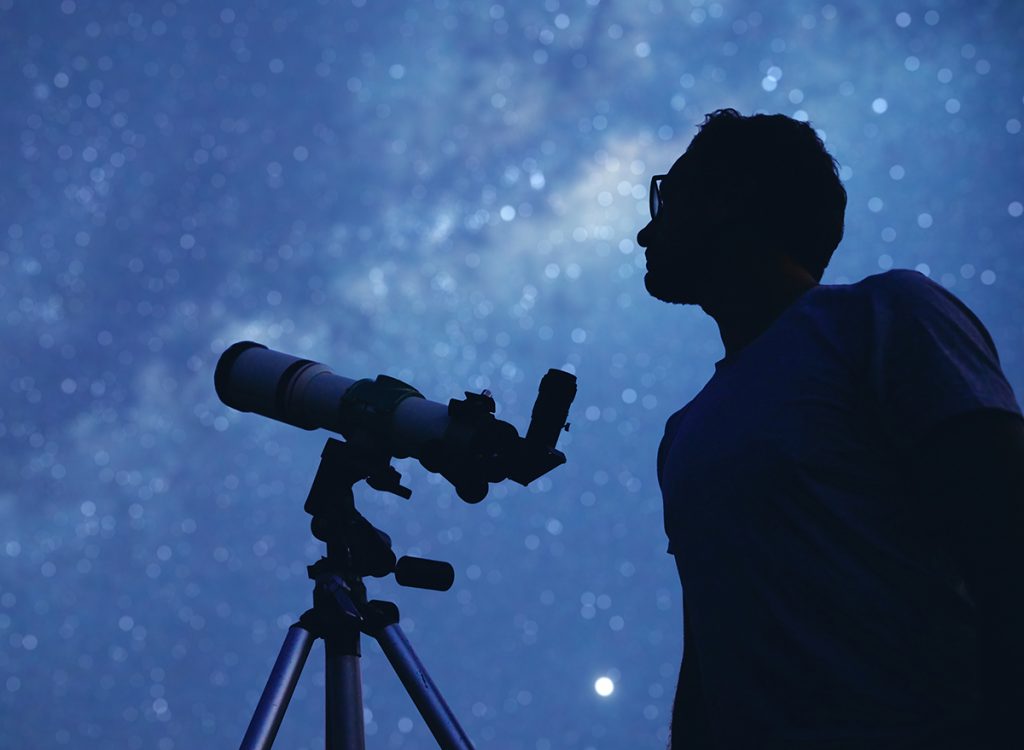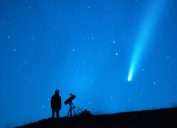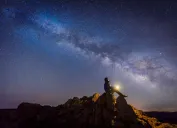Rare "Super Blue" Moon Lights Up the Night Sky This Week—Here's When to Look
It will make its biggest and brightest appearance of the entire year.

As our closest celestial neighbor, the moon is second only to the sun as an unmissable presence overhead. But its changing phases make it something of a permanent performer, outshining even the brightest stars and orbiting close enough for viewers on Earth to make out details of its surface without needing a telescope. Every so often, this dynamic behavior includes spectacular views, and this week, a rare "super blue" moon will light up the night sky. Read on to see when you should plan to look up to glimpse it for yourself.
RELATED: New Green Comet Will Be Clearly Visible at Night—Here's How to See It.
A rare "super blue" moon will appear large in the sky later this week.

If you're hoping to make the most of the remaining summer nights, this week has one excellent reason to spend a little time outdoors. A "super blue moon" will rise as our orbiting neighbor hits its full phase in a rare combination of lunar events, Space.com reports.
As the phrase is famously not literal, the relatively rare "blue moon" refers to the fact that this full moon will be the second of this month. But while it won't be a different color, it will still appear somewhat differently as a "supermoon." This means the full moon is taking place just as it reaches its perigee, or the point in its orbit where it's closest to Earth.
While even regular full moons can be an impressive sight, a "supermoon" is even more striking. The glowing orb will appear brighter and about 14 percent larger in the sky, according to NASA.
RELATED: The Next Total Solar Eclipse Will Be the Last Until 2044, NASA Says.
This "supermoon" is different from the one that took place earlier this month.

August has not been in short supply for must-see astronomical events. Besides showcasing a few impressive meteor showers, the month's first full phase also produced a supermoon. But even though this is the second of the month and the third of 2023, this "super blue" moon will also be the biggest and brightest of the year as it comes closer to the Earth than it will at any other point, just 357,344 kilometers away, Forbes reports.
Stargazers will have one more opportunity to catch a supermoon this year when our orbiting satellite reaches its full phase again next month on Sept. 29. However, this is the first time a blue moon of any kind has taken place since Aug. 2021, according to Space.com.
RELATED: 6 Stargazing Secrets, According to Astronomy Experts.
Here's when and where you should look up to see the "super blue" moon.

Fortunately, if you plan on taking in the "super blue" moon for yourself, you won't have to stay up late or get up before your alarm. It will rise on the night of Wednesday, Aug. 30, climbing above the horizon not long after sunset. And while it will be hard to miss the bright, glowing object in the sky, you can look for a viewing spot with an unobstructed view of the east if you want to catch it as early as possible, according to Space.com.
If weather conditions in your area cooperate, the moon will appear both brighter and larger. The difference between a supermoon and a typical full moon is approximately the same size difference as a quarter and a nickel, according to NASA. And even though it might not turn blue, the moon could take on a stark orange as it first appears above the horizon, making early viewing even more of a special treat.
RELATED: For more up-to-date information, sign up for our daily newsletter.
There's a second treat for anyone who manages to witness the rare lunar event.

But it's not just the moon that will be bright in the sky on Aug. 30. Saturn will also be rising near it, glimmering at its biggest and most brilliant of the year, as well, Space.com reports.
Even though it's much farther away than the moon, our famously ringed neighbor will be just a few days past its point in its orbit where the sun's light hits it most directly from Earth's vantage point, making it shine more brilliantly than usual. You'll be able to spot it by looking just above and to the right of the moon around the area of the constellation Aquarius, per Space.com. And while you should be able to see it without any instruments, binoculars or a telescope could help you make out some of the planet's features.





















